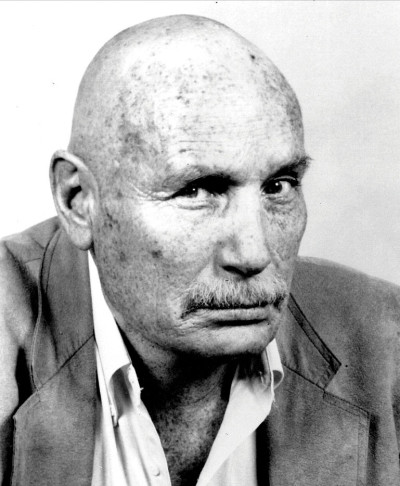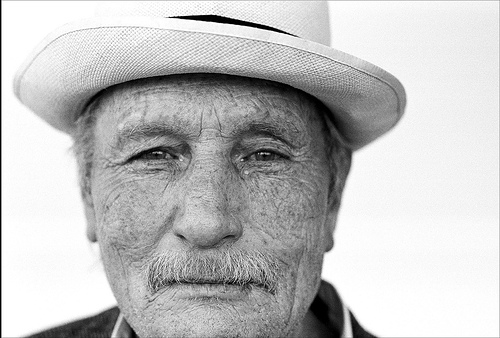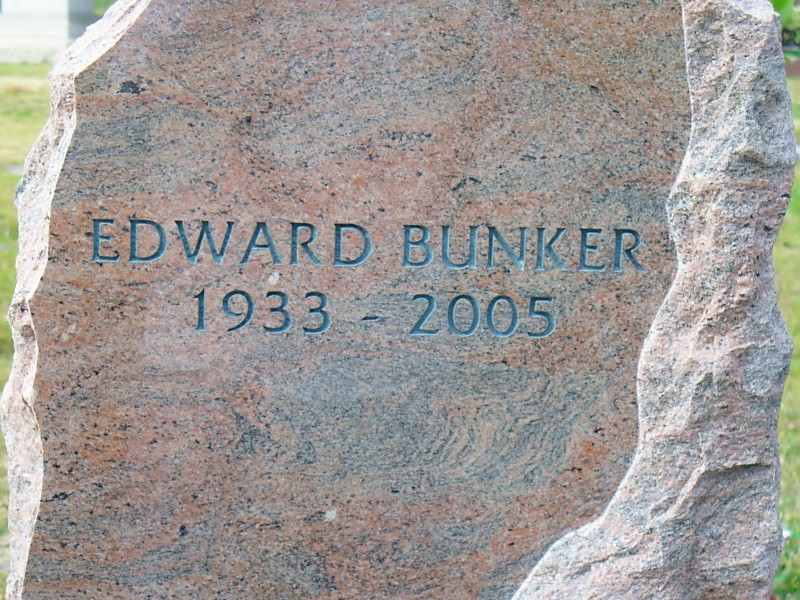Edward Bunker (Edward Heward Bunker)

Bunker was born “on New Year’s Eve, 1933” into a troubled family in Los Angeles. His mother, Sarah (née Johnston), was a chorus girl from Vancouver, and his father, Edward N. Bunker, a stage hand. His parents lived in a constant state of alcohol-fueled argument. His first clear memories were of his parents screaming at each other and the police arriving to “keep the peace.” When they divorced, Bunker ended up in a foster home at the age of five, but he felt profoundly unhappy and ran away. As a result, Bunker went through a progression of increasingly draconian institutions. Consistently rebellious and defiant, young Bunker was subjected to a harsh regime of discipline. He attended a military school for a few months, where peer pressure caused him to take up stealing, but eventually ran away again, ending up in a hobo camp 400 miles away. While Bunker was eventually apprehended by the authorities, this established a pattern he would follow throughout his formative years.
Shoplifting and other crimes of similar scope eventually landed Bunker in Juvenile Hall, where he became acquainted with hardened young criminals. Although Bunker was younger and smaller than the other inmates, he was intelligent, streetwise and extremely literate. He soon learned to hide his fear and embraced the dog-eat-dog mentality that was the norm in his new surroundings. A long string of escapes, problems with the law and different institutions – including a mental hospital – followed.
At the age of fourteen, Bunker was paroled and sent to his aunt. However, the young man was already well on his way to a life of crime and, at the age of sixteen, he was caught on a parole violation. Instead of a reform school or some other institution designed for young offenders, Bunker was sent to prison. This did not chasten Bunker – on the contrary, the young offender was hard and vicious, and proud of it. Bunker believed that he could either be predator or prey, and did his best to establish himself in the former category. In Los Angeles County Jail, he stabbed another inmate – (Bunker claims it was convicted murderer, Billy Cook although circumstantial evidence shows Cook couldn’t have been the victim), in the showers, and soon gained a respectful reputation as a fearless young man. Some thought he was unhinged, but in his book Mr. Blue: Memoirs of a Renegade he stated that it was merely a protective mechanism designed to make people leave him alone.
In 1951, the seventeen-year-old Bunker had the dubious honor of being the youngest ever inmate in San Quentin State Prison. While spending time in solitary – known as “the hole” – he was situated close to the death row cell of Caryl Chessman, who was writing on a typewriter. He had already met Chessman earlier, and Chessman sent him an issue of Argosy magazine, in which the first chapter of his book Cell 2455 Death Row was published. Bunker, inspired by his encounter with Chessman, drew upon his literary influences and decided to try to write his own stories.
When Louise Fazenda, a former star of the silent screen and the wife of motion picture producer Hal B. Wallis, with whom Bunker had already struck up a friendship during his earlier time on the outside and with whom he still kept in contact, arranged for him to have a typewriter, Bunker started to write. The resulting work was smuggled out to Wallis, who showed it to her friends. The work was considered to be unpublishable, but Bunker’s talent had been recognized. (This manuscript eventually became No Beast So Fierce.)
Bunker was paroled in 1956. Now 22, he was unable to adjust to living in normal society. As an ex-convict, he felt ostracized by “normal” people, although he managed to stay out of trouble for several years. Although Mrs Wallis attempted to help him both with her connections and financially, her behaviour became increasingly erratic. She was diagnosed with a nervous breakdown, and her husband pronounced many of her former friends – including Bunker – personae non-gratae in the Wallis household. She died in 1962. For his part, Bunker held down various jobs for a while, including that of a used car salesman, but eventually returned to crime. He orchestrated robberies (although he didn’t personally take part in the execution phase), forged checks and engaged in other criminal activities.
Bunker ended up back in jail for 90 days on a misdemeanor charge. He was sent to a low-security state work farm, but escaped almost immediately by climbing over a poorly guarded fence. He remained a fugitive for over a year, but eventually had to resort to armed robbery to survive. He was finally arrested after a failed bank heist and a high-speed car chase. Bunker then attempted to stay out of jail by pretending to be insane (he went so far as to fake a suicide attempt and claim that the Catholic Church had inserted a radio into his head). The performance convinced the court, and he was declared criminally insane.
Although Bunker was eventually released, he continued a life of crime. In the early 1970s, Bunker ran a profitable drug racket in San Francisco; he was arrested again when the police, who had put a tracking device on his car, followed him to a bank heist. (The police expected Bunker to lead them to a drug deal and were rather shocked by their stroke of luck.) Bunker expected a 20-year sentence, but thanks to the solicitations of influential friends and a lenient judge, he got only five years. In prison, Bunker continued to write. He finally had his first novel No Beast So Fierce published in 1973, to which Dustin Hoffman purchased the film rights. Bunker was paroled in 1975, having spent eighteen years of his life in various institutions. While he was still tempted by crime, he now found himself earning a living from writing and acting. He felt that his criminal career had been forced by circumstances; now that those circumstances had changed, he could stop being a criminal.
He published his second novel, Animal Factory to favorable reviews in 1977. A 1978 movie called Straight Time based on No Beast So Fierce was not a commercial success, but Bunker participated in the drafting of the screenplay, and also got his first acting part in the movie. Like most of Bunker’s parts, it was a fleeting cameo, but Bunker eventually appeared in numerous movies, such as The Running Man, Tango & Cash and Reservoir Dogs (as Mr Blue), as well as the film version of Animal Factory, for which he also wrote the screenplay. Bunker had better luck robbing banks in real life than he did in the movies. In Reservoir Dogs he played one of two criminals killed during a heist. In The Long Riders, he had an even briefer role as Bill Chadwell – one of two members of the James-Younger Gang killed during a bank robbery in Northfield, Minnesota.
Bunker’s hard-boiled and unapologetic crime novels are informed by his personal experiences in a society of criminals in general and by his time in the penal system in particular. Little Boy Blue, in particular, draws heavily on Bunker’s own life as a young man. A common theme in his fiction is that of men being sucked into a circle of crime at a very young age and growing up in a vicious world where authorities are at worst cruel and at best incompetent and ineffectual, and those stuck in the system can be either abusers or helpless victims, regardless of whether they’re in jail or outside. Bunker maintains that much of his writing is based on actual events and people he has known.
In Bunker’s work, there is often an element of envy and disdain towards the normal people who live outside of this circle and hypocritically ensure that those caught in it have no way out. Most of Bunker’s characters have no qualms about stealing or brutalizing others and, as a rule, they prefer a life of crime over an honest job, in great part because the only honest career options are badly paying and low-class jobs in retail or manual labor. Bunker’s autobiography, Mr. Blue: Memoirs of a Renegade, was published in 1999.
In 1977, Bunker married a young real estate agent, Jennifer. In 1993, their first son, Brendan, was born. The marriage ended in divorce.[6] A diabetic, Bunker died on July 19, 2005 in Burbank, California, following surgery to improve the circulation in his legs. He was 71. Bunker was close friends with Mexican Mafia Leader Joe “Pegleg” Morgan, as well as actor Danny Trejo, who is the godfather of his son, both of whom he first met in Folsom State Prison. Michael Mann based the character of “Nate,” played by Jon Voight, on Bunker for his 1995 film, Heat. The film also stars Trejo as a member of Robert De Niro’s (“Neil McCauley” – another real life criminal) crew.
Born
- December, 31, 1933
- USA
- Los Angeles, California
Died
- July, 19, 2005
- USA
- Burbank, California
Cemetery
- Hollywood Forever Cemetery
- Hollywood, California
- USA




